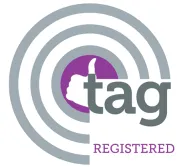Redesigning your website doesn't have to feel like doing a complete makeover of your wardrobe—throwing out every item and starting completely from scratch. In fact, you wouldn't want it to feel like that at all. Regardless of how your website currently looks and functions, it has probably built up some trust among search engines and users alike. You don't want to toss that out while upgrading the look and feel of your website.
Thankfully, it's possible to redesign a website without losing SEO, though it requires keen attention to detail and an intentional process. At large companies, this work would normally be divided up between SEO, marketing, UX, and design teams. But if you're a smaller business, you might not have the luxury of extra hands to handle your website redesign with the kind of care it deserves.
When you partner with CMG, we put those teams and tools at your fingertips to make your website redesign SEO friendly. You can reap the benefits of a brand new high-performing website without sacrificing the SEO successes you've worked hard to earn. Let CMG demystify the SEO website redesign process so you can attract quality leads and convert them into customers with a new website.
Why You Should Redesign Your Website
Redesigning your website can be an extensive undertaking that comes with some risks, not least of which is your current SEO and rankings on results pages. Despite these risks and challenges, there are enormous benefits that make redesigning your website worthwhile.
Make your website mobile-friendly: Since 2017, the majority of searches on platforms like Google have come from mobile devices. If your website was built before this major milestone, it may not be optimized for the mobile devices most of your customers are using to find you. A website redesign can help you keep leads on your site with a mobile-friendly experience.
Opportunity to add videos: Adding a video to your web pages can increase the amount of time leads spend on the page by 88%. If you've been looking for the right time to incorporate video content into your website, a redesign is the right time.
Modernize your look: If you're already updating your logos, colors, and overall brand, then your website has to match. Your website is where customers go to learn about your business and decide whether or not they can trust your offerings. If there's a discrepancy between your digital and physical appearance, it can leave potential customers in the lurch.

Executing a Flawless SEO Website Redesign
Knowing that you can move forward with your plans to redesign your website without losing SEO is one thing, knowing how to do it is another. If you're looking to maintain your SEO through a website redesign, there are three distinct phases. In phase 1, you make the necessary preparations for a smooth redesign. In phase 2, you redesign the website while keeping an eye on essential SEO components like links and page hierarchies. In the final phase, you monitor your redesign for any errors that could disrupt your SEO.
Phase 1: Preparing for a Redesign
Before you dive right into your website redesign, some necessary preparations must be made to avoid losing critical SEO ground and forgetting to make necessary changes. First, start with an analysis of your current site's performance.
Find which pages are performing well, those that aren't serving their intended purpose, and take note of them in a spreadsheet. Having an understanding of which pages perform well in key SEO metrics like organic traffic, quality backlinks, and keywords will give you more direction during the redesign. It's probable that your higher performing pages have more engaging content, headers, and are more user friendly.
Next, prepare your current active site for maintenance by creating a page notifying users that the site is undergoing maintenance if they encounter erroneous links. That way, you avoid discouraging customers from returning to your site to find the information they originally wanted.
Finally, create a backup of your current website in case anything goes wrong and set up a staging website for the new one. A common misstep businesses make when creating their staging website is allowing search engines like Google to index the site. Because the staging website at this site is a duplicate of your current website, the indexing bots read this as duplicate information and will downgrade both sites.
Phase 2: Your SEO Website Redesign
As you begin redesigning your website, use the information your initial analysis revealed to guide the design of your new pages. If your SEO was in really strong shape throughout the site, your redesign shouldn't alter the page hierarchy, URLs, and on-page content. Switching the page hierarchies or deleting pages altogether can negatively impact your SEO because it gives indexing bots the idea that the site is shrinking and becoming less useful.
If you do have underperforming pages, you can edit and combine the pages rather than delete them. Add features to the page that users enjoy and indexing bots consider favorably, like photos and videos. You can also target better keywords with on-page headers and titles to advance up results page rankings.
As you add, change, or combine pages, you'll need to keep track of these changes and implement 301 redirects.
If you're unfamiliar with 301 redirects, these tell indexing bots that land on a URL from your old website to go to a new URL from your updated website. 301 redirects are an essential component of SEO for website redesign because they let you keep the former URL's authority and backlinks, while giving users a better overall experience.
Phase 3: Testing Your SEO Website Redesign
Once you've redesigned your website, adding new components and making the website easier to use on all devices, you might think that's all there is. But just going live on your new website could leave your SEO worse off. During a website redesign, SEO can take a hit from broken pages and redirect loops—while user experience suffers from long loading times and grammatical mistakes.
To avoid these problems, use tools to identify and fix 404 errors. If you deleted any pages during the redesign process, this will create a 404 error for users who access that old page's link. Finding these deleted pages and implementing 301 redirects can help mitigate this issue, but there may be other causes for the 404 error. As you try to find and fix those errors, the "site under maintenance" page you made in phase 1 comes in handy.
While some 301 redirects are useful, you don't want to create too many, as it could create a redirect loop. As you do SEO for website redesign, you'll come to notice when pages have too many redirects because the browser will crash and stop loading. Instead of relying on 301 redirects for every old and new link, update links directly to the new pages. Links in blog posts, on pages, and in headers should link directly to the new page, rather than using a 301 redirect.
Monitor SEO Website Redesign Consistently
After you launch your new website, make sure to allow search engines to index it when you do, you'll want to monitor its performance closely. If previously high-performing pages are no longer at the top, or doing worse than the previous website, this indicates problems with the redesign that should be addressed immediately. Likewise, if certain pages have long load times, find out the cause and address that. 47% of site visitors will leave if the page takes longer than 2 seconds to load. Invest time in monitoring the results before stepping away from the redesign altogether.
Get Your Website Redesign SEO Done Right
Website redesigns are ambitious but necessary for any business looking to gain or maintain their advantage. Optimized websites don't just perform better in search results, they help convert leads. But that doesn't mean redesigns are risk-free. Managing to redesign a website without losing SEO advantages you originally enjoyed can be more than you bargained for.
So don't go it alone. Bring in a team of experts to help manage your website redesign SEO from preparation to long-term monitoring. If you want a website that can turn clicks into customers, contact CMG Local Solutions today. We'll grow your SEO advantage while you sit back and enjoy a stunning new look for your website and brand.







